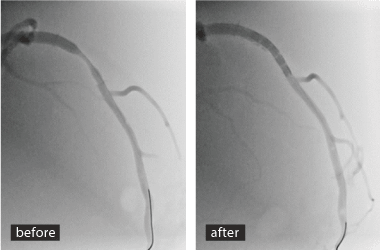
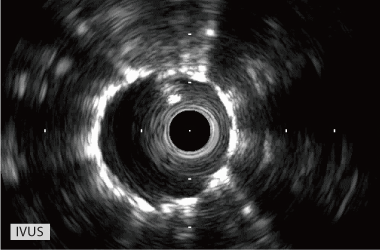
This scenario shows a simple PCI; that is balloon dilatation followed by stent deployment. Imaging catheters (IVUS, OCT, Angioscopy) and FFR are also applicable. Training under X-ray fluoroscopy is more beneficial.
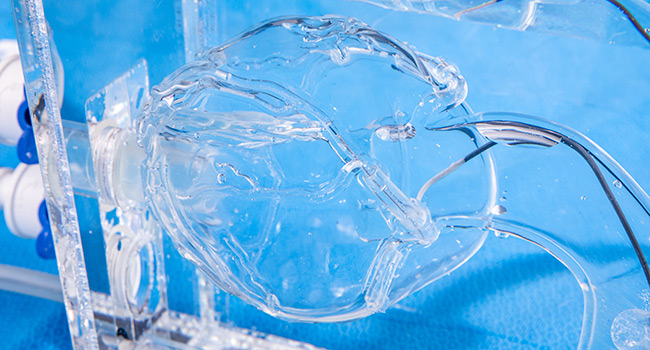
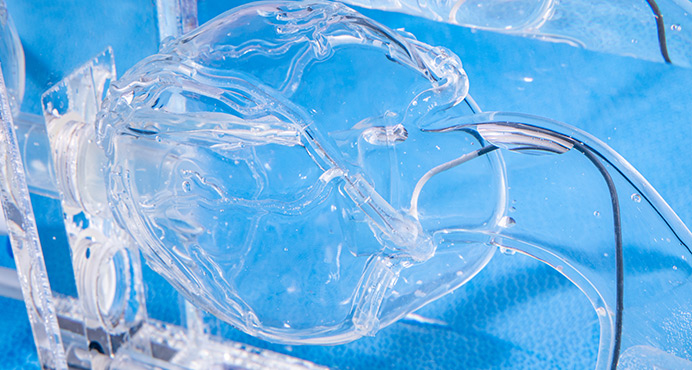
Coronary
You can use the PCI Model to simulate many scenarios including simple CAG, PCI, Atherectomy, ACS, CTO, Bifucation strategy and some bail-out procedures under angiography visualized by camera and X-ray fluorosopy.
This model allows trainees to understand the strategy behind dealing with various lesions, especially severe calcification. With calcified vessel parts, one can practice the debulking technique with Directional Coronary Atherectomy (DCA) devices.
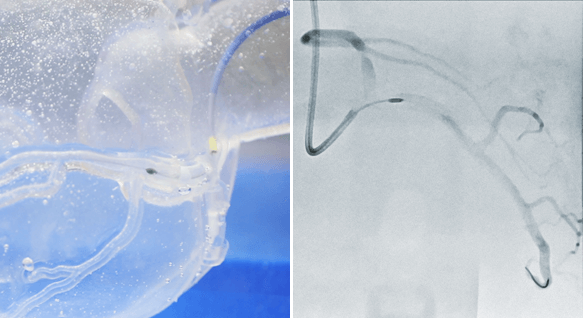
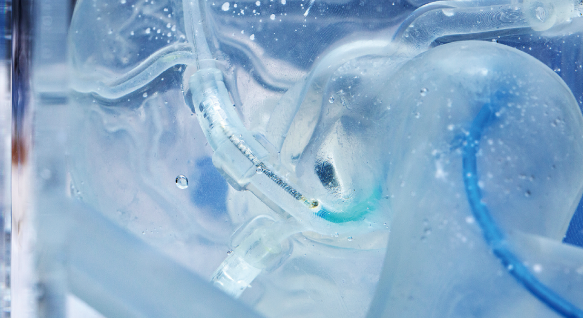
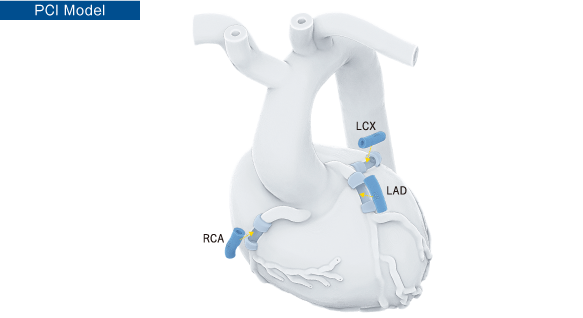
HEARTROID Coronary series have sockets for attaching "Disease parts". You can perform various training by replacing the "Disease parts" according to the purpose.
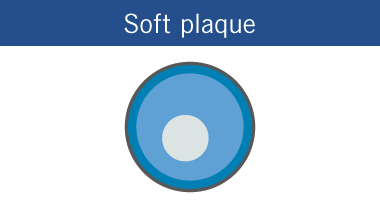
75% stenosis with soft plaque suitable for direct stenting.
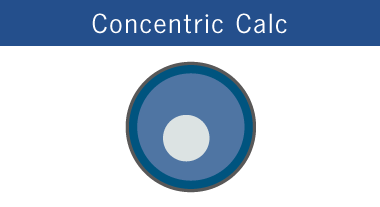
75% stenosis with concentric calcification suitable for rotablation.
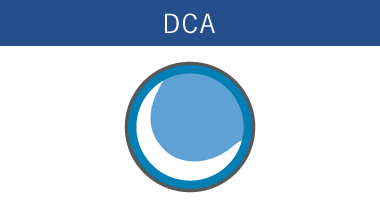
100% total occlusion easy to pass
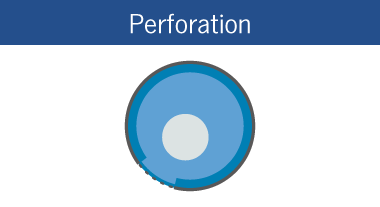
100% total occlusion. (Hardness: level 1 to 5)
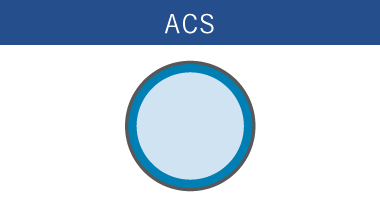
75% stenosis with concentric calcification suitable for Atherectomy.
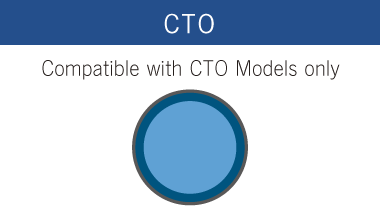
75% stenosis with eccentric calcification suitable for Atherectomy.
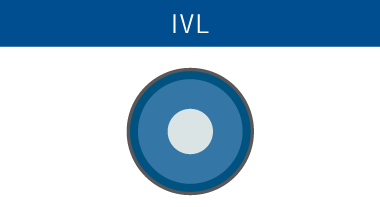
75% stenosis suitable for IVL
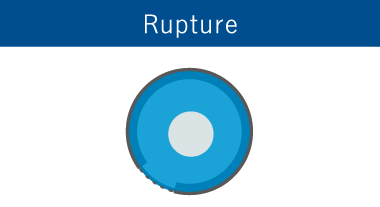
For bail-out scenario “Coronary Rupture”
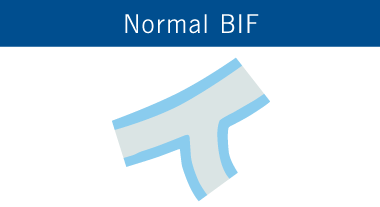
Suitable for stenting under camera view
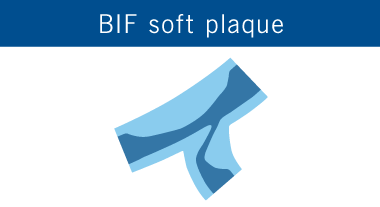
Suitable for stenting under X-ray
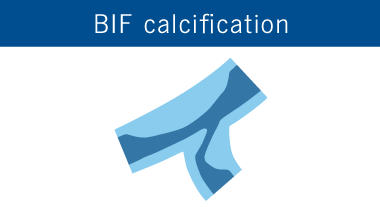
Calcified lesion for both camera and X-ray
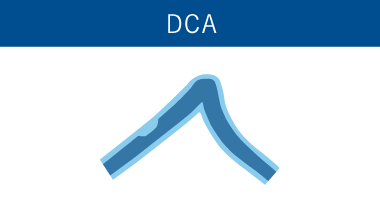
IVUS-visible soft plaque suitable for DCA
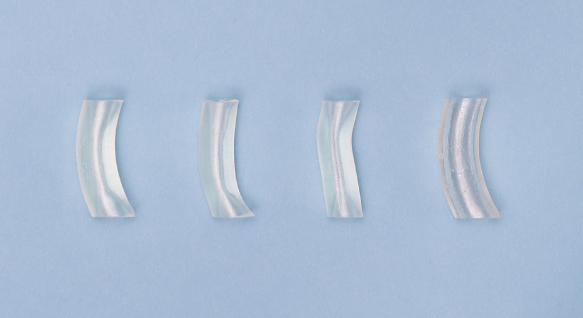
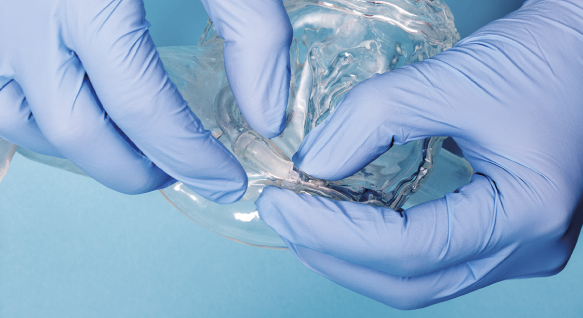
| Model | CAG | PCI | CABG | CTO | BIF |
|---|---|---|---|---|---|
| Coronary angiography (CAG) | 〇 | 〇 | 〇 | 〇 | 〇 |
| PCI/CAG for CABG | 〇 | ||||
| Thrombectomy for ACS | 〇 | 〇 | 〇 | ||
| IVUS / OCT imaging | 〇 | 〇 | 〇 | 〇 | |
| Fractal Flow Reserve (FFR) | 〇 | 〇 | 〇 | 〇 | |
| Stent deployment | 〇 | 〇 | 〇 | 〇 | |
| Atherectomy (Rotablation/OA) | 〇 | 〇 | 〇 | 〇 | |
| Intravascular Lithotripsy (IVL) | 〇 | 〇 | 〇 | 〇 | |
| Directional coronary atherectomy (DCA) |
〇 | ||||
| Bifurcation procedure KBT/Culotte & Crush stenting |
〇 | ||||
| Chronic total occlusion (CTO) | 〇 | ||||
| Coronary rupture (Covered stent) | 〇 | 〇 | 〇 | 〇* | |
| Coiling for coronary perforation | 〇 | 〇 | 〇 | 〇 | 〇 |
*for RCA only


This scenario shows a simple PCI; that is balloon dilatation followed by stent deployment. Imaging catheters (IVUS, OCT, Angioscopy) and FFR are also applicable. Training under X-ray fluoroscopy is more beneficial.
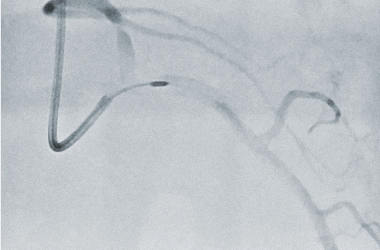
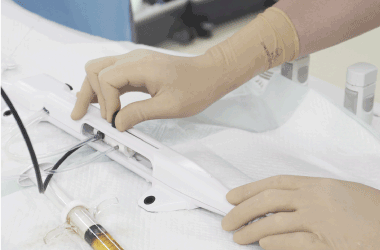
This scenario allows trainees to understand the strategy behind dealing with various lesions, especially severe calcification. With calcified vessel parts, one can practice the debulking technique with Rotablator and Directional Coronary Atherectomy (DCA) devices. Training under X-ray fluoroscopy is more beneficial.
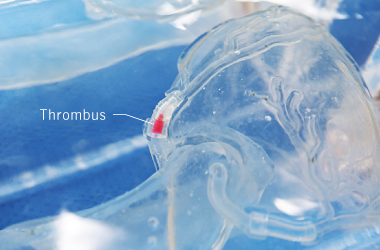
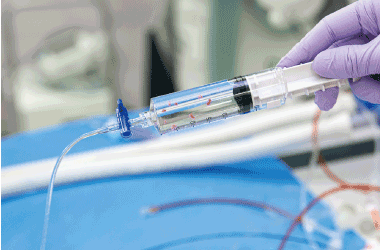
This scenario facilitates emergent PCI strategy including thrombectomy followed by balloon dilatation and stent deployment. In successful case, you can see some thrombus in a syringe along with a nice final angiography.
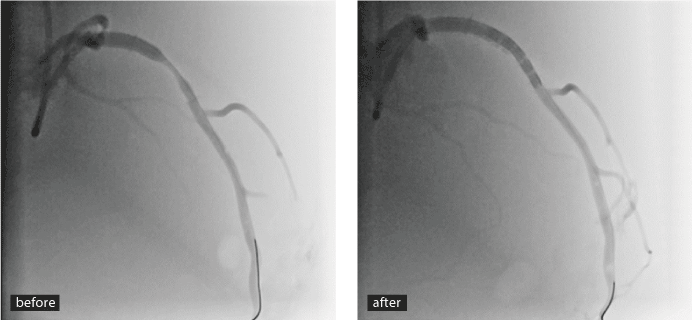
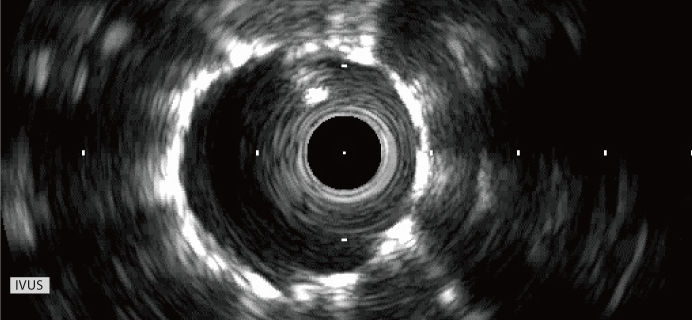
This scenario shows a simple PCI; that is balloon dilatation followed by stent deployment. Imaging catheters (IVUS, OCT, Angioscopy) and FFR are also applicable. Training under X-ray fluoroscopy is more beneficial.
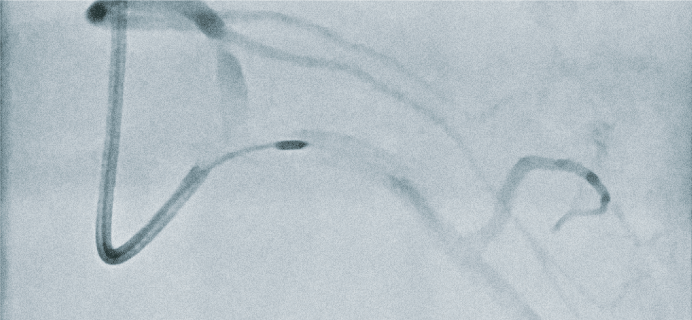
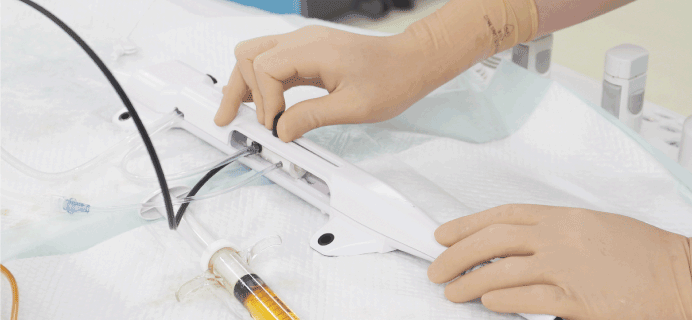
This scenario facilitates emergent PCI strategy including thrombectomy followed by balloon dilatation and stent deployment. In successful case, you can see some thrombus in a syringe along with a nice final angiography.
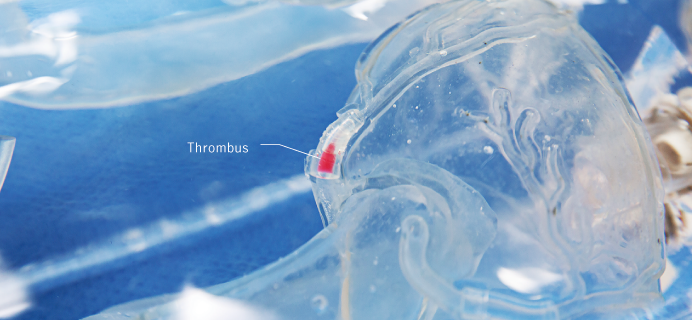
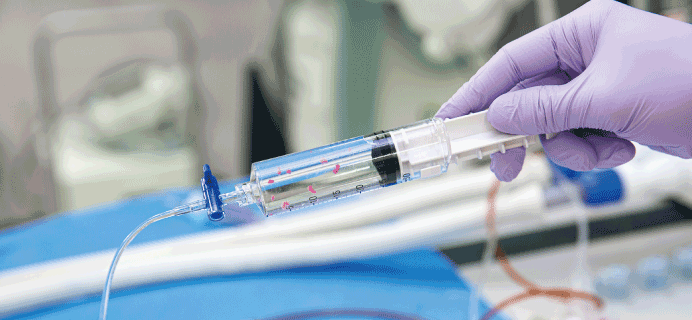
This scenario facilitates emergent PCI strategy including thrombectomy followed by balloon dilatation and stent deployment. In successful case, you can see some thrombus in a syringe along with a nice final angiography.
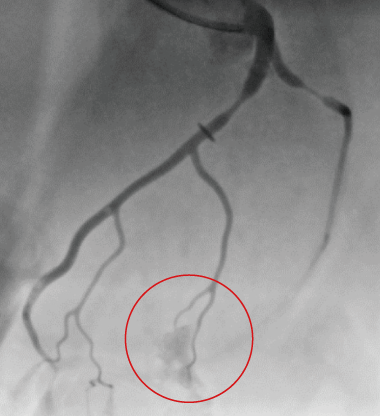
Coronary perforation
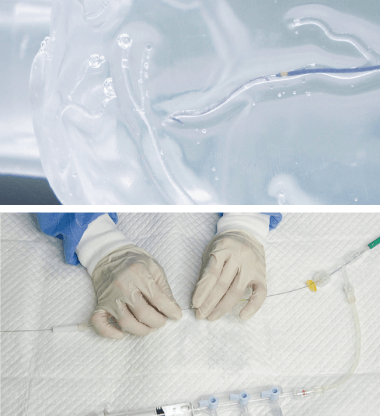
Coiling procedure
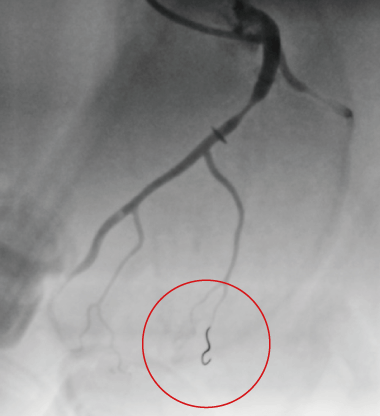
Successful coiling
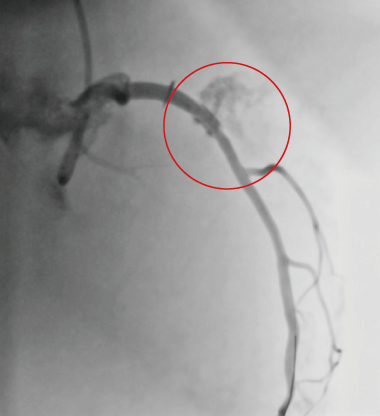
Coronary rupture
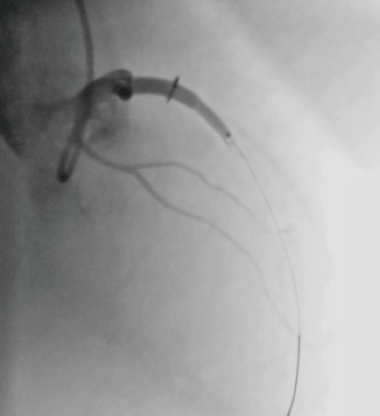
Balloon occlusion
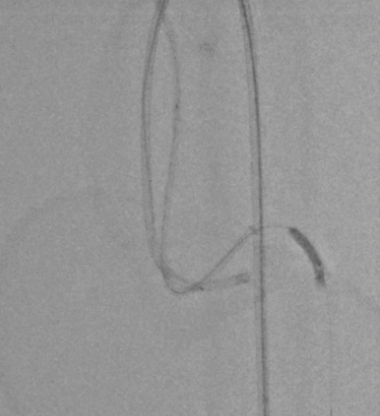
Double guide catheter
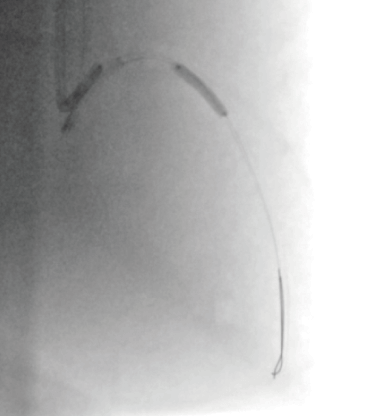
Ping-pong technique
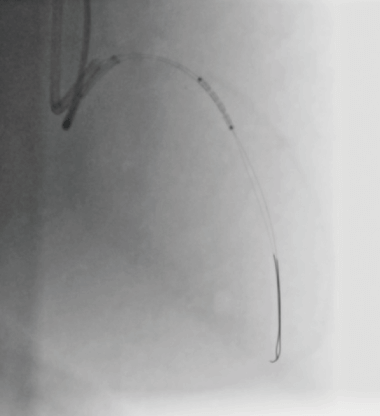
Covered stent
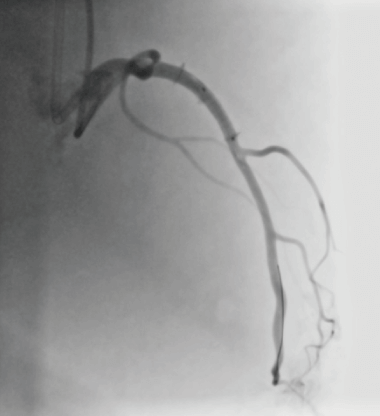
Successful stenting
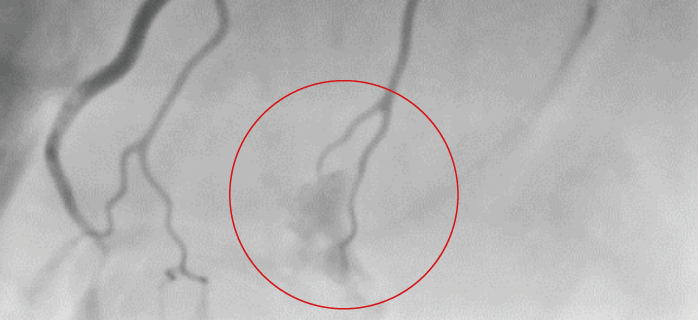
Coronary perforation
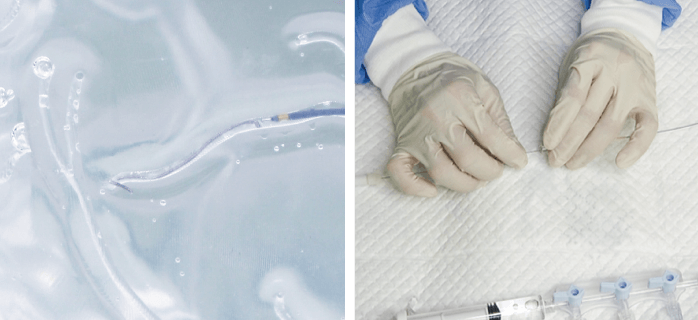
Coiling procedure
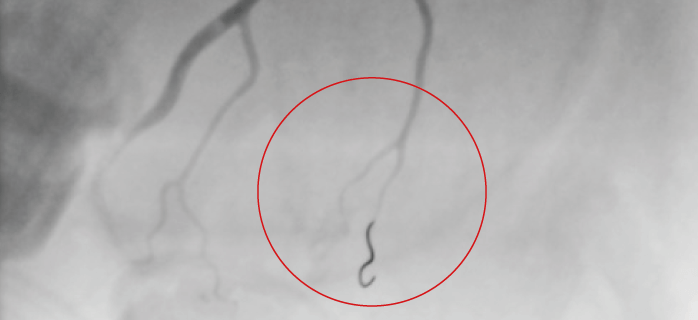
Successful coiling
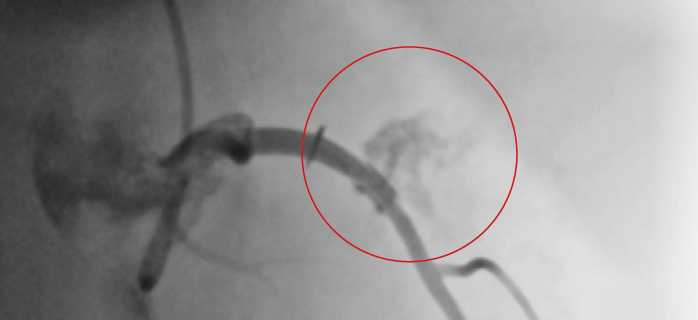
Coronary rupture
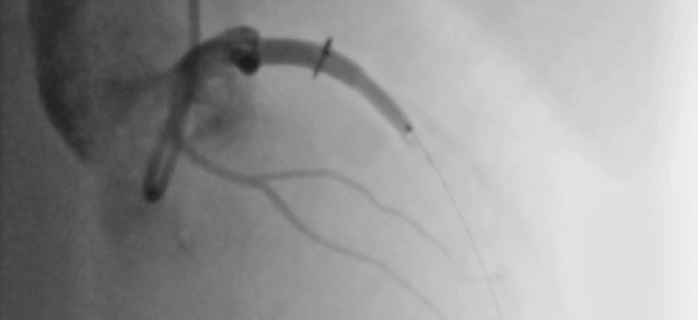
Balloon occlusion
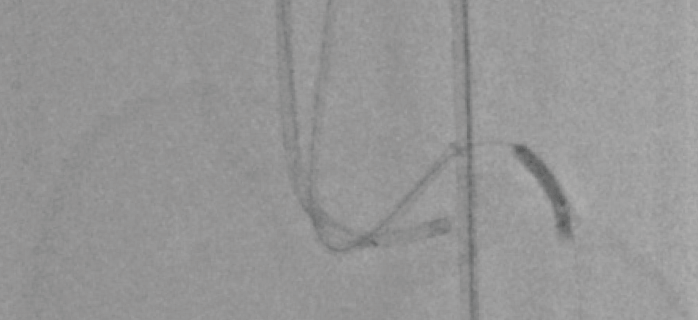
Double guide catheter
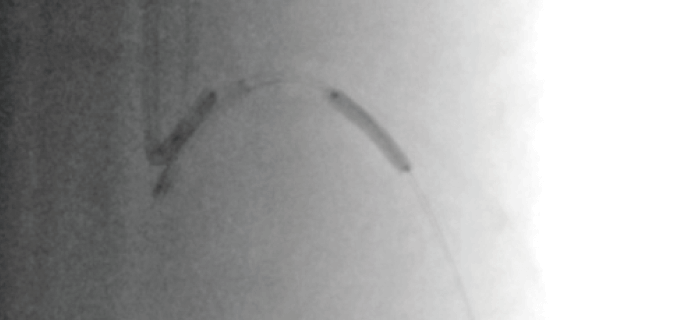
Ping-pong technique
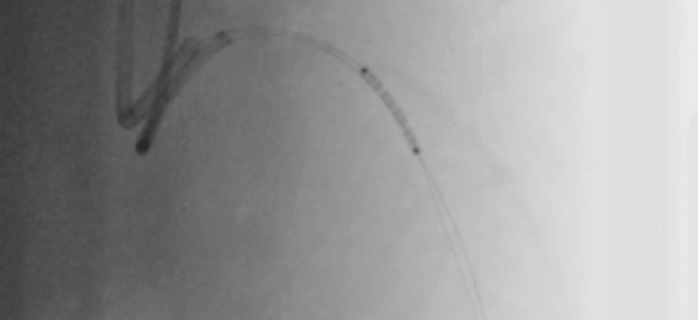
Covered stent
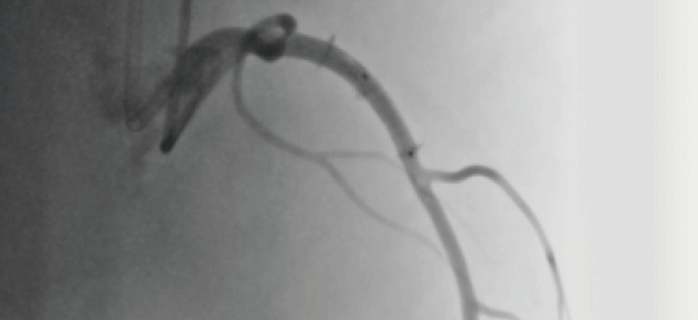
Successful stenting
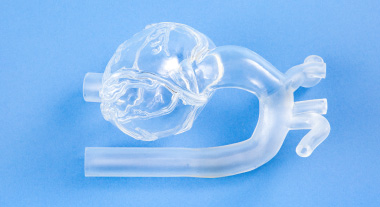
Heart Model for PCI
A heart model suitable for practical training in CAG and PCI under X-ray fluoroscopy in the cath lab. Stent deployment and guide wire manipulation can be simulated with this model.
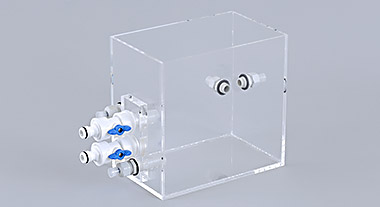
Smart Tank for Coronary
Transparent tank that provides high visibility for catheter use simulation with or without X-ray fluoroscopy. No more than six liters of water are required for training.
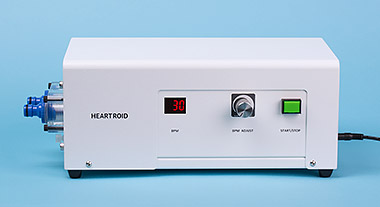
HEARTROID Pump Type-1
Our uniquely-developed pulsatile pump can be set by 30-120 bpm (1600-4000ml/min in flow volume.). Realistic coronary images are obtained by particular patterns of the cylinder movement. The pump and tank are connected with easy-to-prepare connectors to avoid water leaks and time losses.
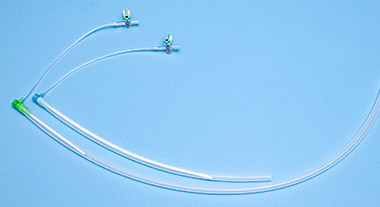
Tubes with Sheath
Special tubes with sheath.
Number of tubes: 2 ( 6・8Fr )
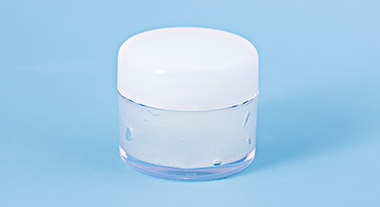
Lubricant
Special lubricant for coating the inner surface of the heart model.
1 fl. oz. ( lasts for 20 coatings )
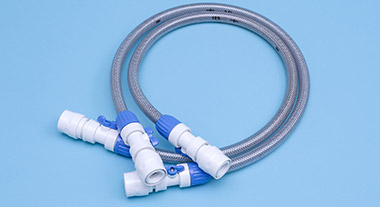
Hoses
Hose with one-touch joint.
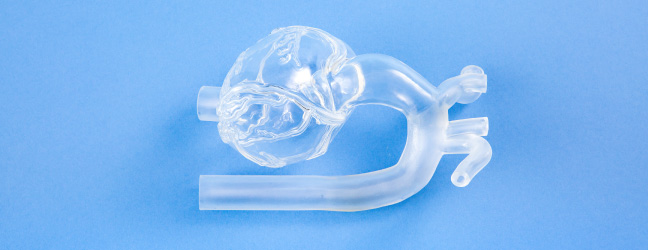
Heart Model for PCI
A heart model suitable for practical training in CAG and PCI under X-ray fluoroscopy in the cath lab. Stent deployment and guide wire manipulation can be simulated with this model.
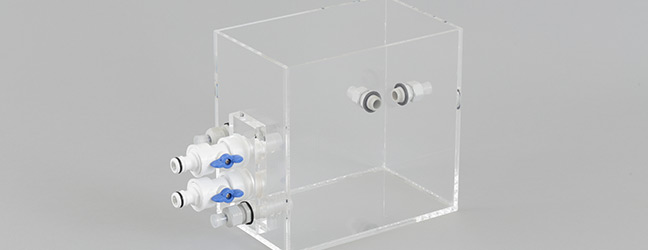
Smart Tank for Coronary
Transparent tank that provides high visibility for catheter use simulation with or without X-ray fluoroscopy. No more than six liters of water are required for training.
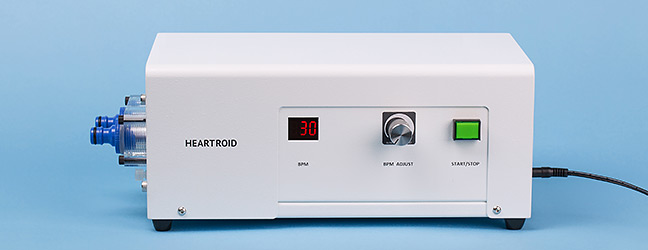
HEARTROID Pump Type-1
Our uniquely-developed pulsatile pump can be set by 30-120 bpm (1600-4000ml/min in flow volume.). Realistic coronary images are obtained by particular patterns of the cylinder movement. The pump and tank are connected with easy-to-prepare connectors to avoid water leaks and time losses.
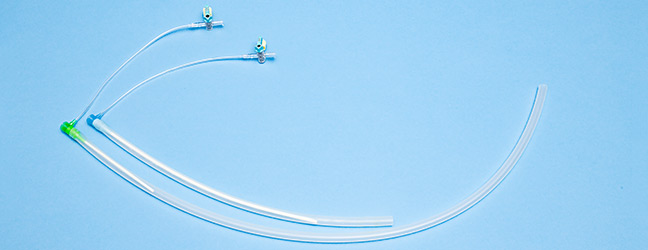
Tubes with Sheath
Special tubes with sheath.
Number of tubes: 2( 6・8Fr )
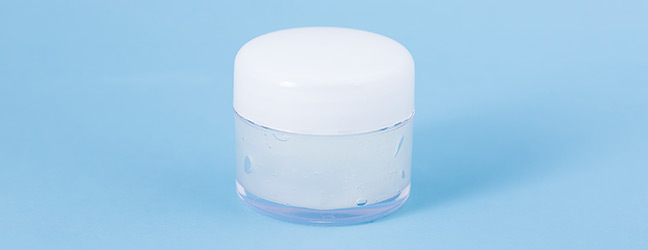
Lubricant
Special lubricant for coating the inner surface of the heart model.
1 fl. oz. ( lasts for 20 coatings )
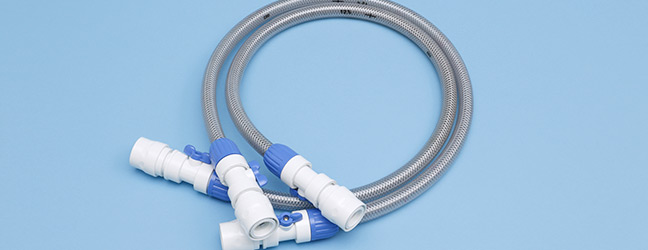
Hoses
Hose with one-touch joint.
PCI Model Setup Procedure Video
This video provides step-by-step instructions for setting up the PCI Model. HEARTROID is ready for training in just a few minutes.